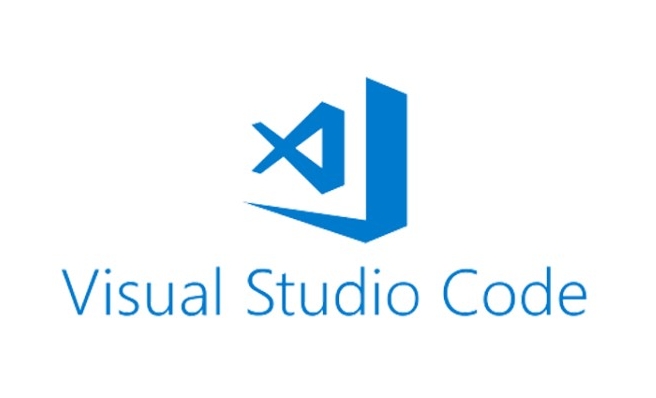Installing ES7 React/Redux/GraphQL/React-Native snippets can quickly generate React component templates, such as inputting rfc to generate function components, and inserting useState into useState Hook; 2. Use Prettier to automatically format the code when saving, and unify the team code style with .eslintrc files; 3. ESLint combined with plug-ins can check potential problems in React projects, such as missing or unused variables; 4. React Developer Tools is a browser extension, used to debug component trees and locate source code. These plug-ins cover the entire process of writing, formatting, checking and debugging of React development. Pay attention to the configuration collaboration between ESLint and Prettier to avoid conflicts.

If you write React with VS Code, installing the right plug-in can double your efficiency. Some plug-ins can help you quickly generate component structures, while others can automatically complete, format code, and even check for errors when writing JSX.

The following are a few VS Code plug-ins that I think are particularly practical in my daily development. They have sorted them out according to their functions:

1. ES7 React/Redux/GraphQL/React-Native snippets
This plugin is simply a magic weapon for writing React. It provides a bunch of shortcut code snippets. For example, inputting rfc can quickly generate a function component template. rcc is a class component, and redux can generate Redux-related code structures.
Recommended usage:

- No additional configuration is required after installation, the default shortcut keys take effect
- Supports multiple React technology stacks (including Redux and GraphQL)
- Very suitable for beginners to quickly build component structures, and veterans can save a lot of time to type code
Examples of common fragments:
-
imr→ import React -
conc→ Create context -
usestate→ Quickly insert useState Hook
2. Prettier - Code formatter
Prettier is one of the most popular code formatting tools in the front-end circle. In React projects, the mixed code of JSX and JS is prone to confusing formats. With Prettier, it can unify the style and automatically format it when saved.
Recommended usage:
- Settings automatically formats when saving (File > Preferences > Settings, search format on save)
- Can be customized with
.prettierrcfile - It is recommended to use it with ESLint to avoid format conflicts
Note:
- The default formatter may not be Prettier, and it needs to be set manually
- If you are using Airbnb or other specifications, remember to adjust the configuration to match the team style
3. ESLint
ESLint is not only a syntax checking tool, but also helps you find potential bugs, such as the useEffect dependencies not written in full, the variables are not used, etc. Especially in React projects, combining eslint-plugin-react and @typescript-eslint/eslint-plugin is even more powerful.
Recommended usage:
- After installation, make sure there is a
.eslintrcconfiguration file in the project - Can be used with Prettier (need to install eslint-config-prettier to disable conflict rules)
- An error will be marked directly in VS Code, and you can see a prompt by hovering over the mouse.
Common error reminders:
-
Missing dependency in useEffect -
Unexpected default export of component -
No direct mutation of state
4. React Developer Tools (official recommendation)
Although this is not a VS Code plugin, it is a necessary browser extension for debugging React applications. You can view the component tree, props, state through it, and even "jump" to the corresponding source code location of the component.
Recommended usage:
- Install Chrome/Firefox version of React DevTools
- Click a component in the Component panel, VS Code will automatically open the corresponding file and locate the number of lines (provided that you have enabled debugging configuration locally)
Basically that's it. The above plug-ins are combined to basically cover the entire process of code writing, formatting, inspection and debugging. Not complicated but easily overlooked is that some of them need to be coordinated with configuration to maximize their role, such as the collaborative work of ESLint Prettier.
The above is the detailed content of Best VS Code extensions for React. For more information, please follow other related articles on the PHP Chinese website!

Hot AI Tools

Undress AI Tool
Undress images for free

Undresser.AI Undress
AI-powered app for creating realistic nude photos

AI Clothes Remover
Online AI tool for removing clothes from photos.

Clothoff.io
AI clothes remover

Video Face Swap
Swap faces in any video effortlessly with our completely free AI face swap tool!

Hot Article

Hot Tools

Notepad++7.3.1
Easy-to-use and free code editor

SublimeText3 Chinese version
Chinese version, very easy to use

Zend Studio 13.0.1
Powerful PHP integrated development environment

Dreamweaver CS6
Visual web development tools

SublimeText3 Mac version
God-level code editing software (SublimeText3)
 How to change the default terminal in vscode settings?
Jul 05, 2025 am 12:35 AM
How to change the default terminal in vscode settings?
Jul 05, 2025 am 12:35 AM
There are three ways to change the default terminal in VSCode: setting through a graphical interface, editing settings.json file, and temporary switching. First, open the settings interface and search for "terminalintegratedshell" and select the terminal path of the corresponding system; secondly, advanced users can edit settings.json to add "terminal.integrated.shell.windows" or "terminal.integrated.shell.osx" fields and escape the path correctly; finally, you can enter "Terminal:SelectD through the command panel
 Fixing 'Timed out waiting for the debugger to attach' in VSCode
Jul 08, 2025 am 01:26 AM
Fixing 'Timed out waiting for the debugger to attach' in VSCode
Jul 08, 2025 am 01:26 AM
When the "Timedoutwaitingforthedebuggertoattach" issue occurs, it is usually because the connection is not established correctly in the debugging process. 1. Check whether the launch.json configuration is correct, ensure that the request type is launch or attach and there is no spelling error; 2. Confirm whether the debugger is waiting for the debugger to connect, and add debugpy.wait_for_attach() and other mechanisms; 3. Check whether the port is occupied or firewall restricted, and replace the port or close the occupied process if necessary; 4. Confirm that the port mapping and access permissions are configured correctly in a remote or container environment; 5. Update VSCode, plug-in and debug library versions to solve potential
 How to set environment variables for the terminal in VS Code settings on Linux?
Jul 06, 2025 am 12:23 AM
How to set environment variables for the terminal in VS Code settings on Linux?
Jul 06, 2025 am 12:23 AM
There are two ways to set environment variables for VSCode terminals on Linux: one is to use the terminal.integrated.env.linux configuration item to define variables that are only used by VSCode; the other is to modify the shell configuration file to take effect globally. 1. In VSCode, add variables such as "MY_VAR":"my_value" by setting the terminal.integrated.env.linux field. This method only affects the VSCode terminal; 2. Modify shell configuration files such as ~/.bashrc or ~/.zshrc and add exportMY
 What are VS Code workspaces, and how are they used?
Jul 10, 2025 pm 12:33 PM
What are VS Code workspaces, and how are they used?
Jul 10, 2025 pm 12:33 PM
VSCode workspace is a .code-workspace file that saves project-specific configurations. 1. It supports multi-root directory, debug configuration, shortcut key settings and extension recommendations, and is suitable for managing different needs of multiple projects. 2. The main scenarios include multi-project collaboration, customized development environment and team sharing configuration. 3. The creation method is to save the configuration through the menu File>SaveWorkspaceAs.... 4. Notes include distinguishing between .code-workspace and .vscode/settings.json, using relative paths, and avoiding storing sensitive information.
 Where is the vscode settings.json file located?
Jul 14, 2025 am 01:21 AM
Where is the vscode settings.json file located?
Jul 14, 2025 am 01:21 AM
To access the settings.json file of VSCode, you can directly open it through the command panel (Ctrl Shift P or Cmd Shift P). The default storage location of the file varies according to the operating system. Windows is in %APPDATA%\Code\User\settings.json, macOS is in $HOME/Library/ApplicationSupport/Code/User/settings.json, Linux is in $HOME/.config/Code/User/
 How to set environment variables for debugging in vscode settings?
Jul 10, 2025 pm 01:14 PM
How to set environment variables for debugging in vscode settings?
Jul 10, 2025 pm 01:14 PM
To set debug environment variables in VSCode, you need to use the "environment" array configuration in the launch.json file. The specific steps are as follows: 1. Add "environment" array to the debugging configuration of launch.json, and define variables in key-value pairs, such as API_ENDPOINT and DEBUG_MODE; 2. You can load variables through .env files to improve management efficiency, and use envFile to specify file paths in launch.json; 3. If you need to overwrite the system or terminal variables, you can directly redefine them in launch.json; 4. Note that
 How can I improve VS Code performance on Linux by changing file watcher settings?
Jul 13, 2025 am 12:38 AM
How can I improve VS Code performance on Linux by changing file watcher settings?
Jul 13, 2025 am 12:38 AM
ToimproveVSCodeperformanceonLinux,adjustinotifylimitsandconfigurefilewatcherexclusions.First,increasesystem-levelinotifylimitsbyeditingsysctl.confandaddingfs.inotify.max_user_watches=524288,fs.inotify.max_queued_events=65536,andfs.inotify.max_user_in
 How to disable extensions for a specific workspace in vscode settings?
Jul 05, 2025 am 01:22 AM
How to disable extensions for a specific workspace in vscode settings?
Jul 05, 2025 am 01:22 AM
In VSCode, you can disable specific extensions by configuring .vscode/extensions.json and workspace settings. The specific steps are as follows: 1. Create or edit the .vscode/extensions.json file and add "ignoreRecommendations":true to ignore global recommendations; 2. Use the "recommendations" field in this file to specify only enabled extensions; 3. Open the workspace settings.json file and add configuration items such as "eslint.enable":false to disable support






